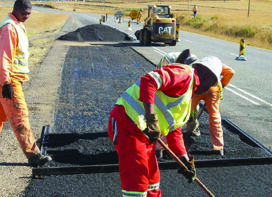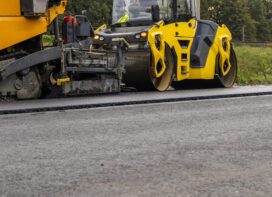The issue of road safety has been complex and multifaceted for generations. Risk factors include speeding, drunk driving, not wearing a helmet or a seatbelt. The four risk factors have measurable effects on road mortality and morbidity regardless of the fact that many other factors contribute to road injuries and deaths (e.g., infrastructure and vehicle safety measures). A panel of experts discussed the technology, infrastructure and policies determining safety on roads.
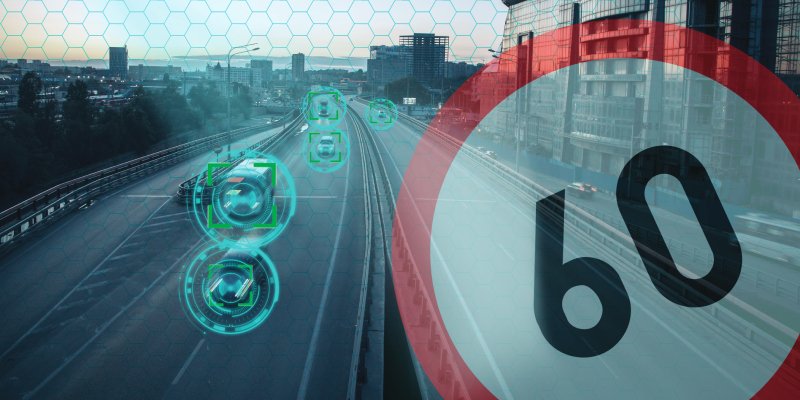
Addressing the panel on What is Road Safety 2.0? Akhilesh Srivastava, World Economic Forum – Leading Road Safety 2.0 in India explained, “Simply put, it is the next generation of road safety, which also happens to be the topic of this session.
It is clear that technology is about to revolutionize road safety. With Covid’s expedited digitization option, one can see how quickly we have adopted government programs like UPI and Fastag. Srivastava cites, “During my recent talks in the USA, I outlined the scale of Aadhar cards, where 130Cr Indians’ retinas were scanned. This is a staggering number for anyone to contemplate. Imagine, implementing road safety with such a large population is a colossal endeavour. We cannot discuss without understanding what is happening in the mind of the driver who is on the ground. You need to understand the cause of the accident and what was on the driver’s mind at the time of accident.”
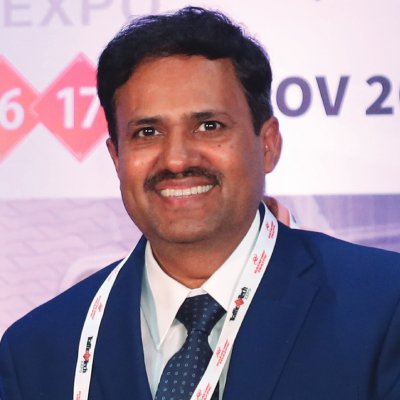
Technology-based solutions must reach the intended audience and an ecosystem must be created around them.”
–Akhilesh Srivastava
According to current data, about 3.5Cr people hold driving licenses in India. On a pilot basis, the World Economic Forum instituted the Road Safety 2.0 program where each driver is tracked, and a score is given based on how they drive. A pilot study of some 15,000 commercial vehicle drivers was conducted for six months, and there was not a single fatality in the study. A simple mobile application monitored drivers’ behaviour and converted it into scores. The scores were simple; if a driver drove at a normal speed, he would earn a certain point per kilometre. For example, if he runs 100kms he gets 60 points. This is what we did hypothetically. In the event of over speeding, the driver is notified with an alert and points are deducted.
Similarly, a commercial driver who drives for four hours or more is prevented from developing road hypnosis because perceptions are delayed beyond that point. A very simple mechanism also checks how much jerking the driver does, so he gets an alert and his points start reducing. “Our observation was that these scores kept rising month after month. We also found that drivers with high scores drove exceptionally well.”
In addition, one could analyze what was wrong, and tailor a training program, send him a capsule or any AI Tracker, and inform him about his habitual over speeding, long driving, or jerky driving so that he can correct it. Furthermore, there is an effort to trying to link the driving score with the insurance premium based on safe driving scores. Initially some money was given, but now discussion with IRDAI has resulted in rules getting changed. “A few NGOs came forward during the pilot program, and some companies began honouring these points with redeemable coupons. It was a true game changer.”
It is also worth discussing the use of ITS applications. If ITS applications are used, who is responsible for monitoring so many cameras since the number of police personnel in India is a quarter of the international average? In India, there are 142 police per lakh population, while worldwide it is approximately 560. It is not practical for the police to examine every offense and issue challans. Therefore, regardless of the solution, it must be a public-private partnership with experts in the field where they bear the capital expenditures, operational costs, and get a percentage of the revenue.
A next major development in ITS is cloud-based platforms, which have now come to the fore. Several cloud-based solutions aggregate data from telematics, and then are converted into alerts for drivers, police, and others.
The problem cannot be solved unless we reach the people who are actually driving the vehicles or who are actually moving on the roads. It will be necessary to use technology, to have a communication link back to them, and of course to raise awareness & educate them in order to reach them.
World Economic Forum did small pilot on emergency care. This was a very low cost QR code-based technology where somebody scans and the alert goes to the next of kin or to the nearest hospital. Srivastava said, “With IRF, we are creating a school zone tracking portal, roughly we have 15 lakh schools in India and we are creating a portal where we will be monitoring which school is safe as per the IRC norms. There should be signage, zebra crossings for children, and we will monitor these things.”
The need for adequate road infrastructure
A study was conducted by the National Highways Authority (NHAI) to determine what causes road fatalities, why they occur, and which modes are involved. A comparison of 2019 and 2020 data revealed that 60 percent of fatalities on national highways, which are most common on 4-lane and 6-lane roads, happen due to vulnerable road users. Dr HM Naqvi, Chief General Manager (Technical), National Highways Authority of India said those responsible for designing the highways and roads, including the DPR consultant, must pay due attention to the needs and requirements of vulnerable road users, and provide adequate infrastructure. Pedestrians, non-motorised vehicles, bicycles, motorised two- wheelers, when combined together turns out to be 60 percent.

Highway designers and agencies must consider the traffic & infrastructure requirements of vulnerable road users when designing highways or roads”
–Dr HM Naqvi
Naqvi questioned, “What are the causes and why does it happen? Overspeeding is one of the criteria that you will often find on national highways, especially those with 4-lane and 6-lanes. In addition, the person reporting the accident may not be familiar with the other causes of the accident, and as a result they report overspeeding as the main cause. Driving on the wrong side is also a very serious problem on Indian roads. I feel that there should be holistic checks by our highway engineers as to why wrong-side driving takes place. Is there any deficiency in the road design? If it is so that has to be checked, we cannot blame the road user every time.”
NHAI tried to analyse how many fatalities occur per kilometer, state-by-state. Among them, Tamil Nadu showed a decrease in fatalities; previously, it was 0.97 but now it shows a decrease of 0.69. While in Uttar Pradesh, the fatality rate has increased from 1.15 to 1.36 percent which is on the higher side as per international data. NHAI is trying to reduce it as much as possible, and this is an insightful analysis for understanding and comparing.
How does NHAI identify accident spots? He explained, “To begin with, we have classified the accident spots into two groups, the black spots that have been notified by MoRTH based on fatalities and accidents, and the non-notified accident spots that have been identified by the state police but have not yet been recognized by the ministry as black spots, and we are dealing with them separately. There were 550 black spots from 2011 to 2014. This number grew to roughly 4,000 from 2015 to 2018. As of now, the list is not complete, but 300 spots have already been identified from 2017 to 2019.
“Our project directors and regional officers have been instructed to take immediate short-term measures as soon as they identify black spots where accidents happen repeatedly. Long-term measures can also be implemented if accidents do not occur.”
As you can see from the current long-term measures, 67 percent of black spots were fixed; their post-rectification evaluation is underway and will take some time. We are also capturing the data through GIS portal called Data Lake in NHAI and based on this we check which state has serious problems in comparison to other states. These are the attributes we collect when we capture data through GIS.
To expedite the black spot rectifications, NHAI have delegated powers to the project directors up to Rs. 25 lakhs per black spot. Similarly, regional officers have been delegated Rs. 50Cr per black spot which is quite a significant amount. As a result, large number of black spots which have been identified by MoRTH and the police department can be addressed. In addition, foot overbridges, pedestrian underpasses can also be constructed with the delegation we have given to the project directors and regional officers. As a short-term measure, you can display blinkers, lane markings, warning signs, and other signs along the Kasara Ghat. At Mumbra, we have constructed a bypass which is a long-term rectification of the black spot, earlier the road was passing through the main town. For non-notified accident spots, we have requested all of our project directors and the regional officers to compile the data received from the police and take short-term measures, including long-term measures which they can take through normal procedure. With this we hope that large number of non-notified accident spots shall be addressed.
Talking on the annual road safety action plan, Naqvi said, “we are working on the model road safety and carrying out road safety audits. Our PDs and regional officers are carrying out model safe road program. We have made 15 days road safety audit training mandatory for all of our young engineers, managers, deputy managers and also for our consultants and concessionaires. Advanced Traffic Management Systems is being implemented almost at all our new projects which has large number of features including IT enabled solutions. We are also working for cashless insurance scheme on pilot basis which will be launched soon.”
Technology interventions for reducing road fatalities
With the help of AI, technologies and cameras can capture the vehicles moving at up to 250km per hour with an accuracy of 99.5% on OCR-based number plate recognition system. Prashant Oberoi, Head – Government Sales (India), Norden Communication Private Limited explained, “If you see, the red-light violation detection is primarily in the city and not on the National Highways. But with the help of AI & ML modules, one can see whether the proper guidelines for the helmets are being followed or not.”
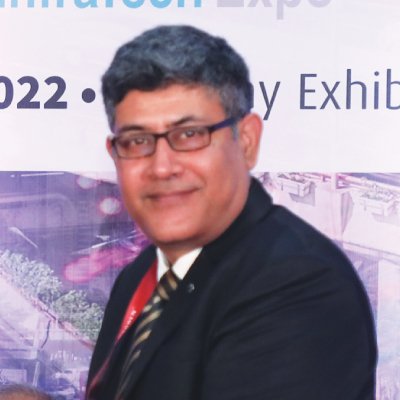
Technology interventions can reduce or prevent traffic accidents and road fatalities.”
–Prashant Oberoi
Illegal parking is another menace in cities for traffic conditions but it becomes one of the key points for accidents on highways. With vehicles moving at high speeds on the highways, a wrongly parked car can lead to accidents. Whether a vehicle is parked in a proper parking bay or not can be easily detected with an accuracy of 99%.”
Norden’s products have been implemented in cities as well as highways, their ATMS products are installed at Delhi Mumbai Expressway and also at the Varanasi Smart City.
According to Tony Mathew, Head Delivery and Operations, TRL “There is more to road safety than engineering; it is about ensuring the safety of road users, enforcing the law, post-crash care, and speed management.”
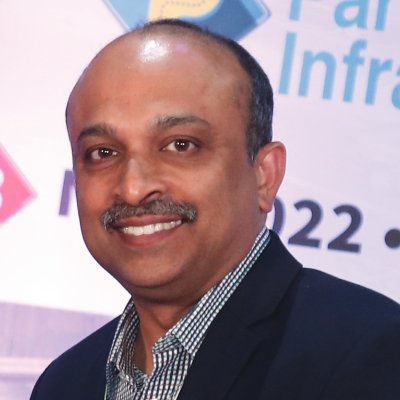
Data is the new oil. Crash data can be used judiciously to improve engineering, enforcement, and post-crash care. Our problem is that we have a high risk of crashes because we don’t focus on evidence or data.”
–Tony Mathew
TRL has done an analysis of how robust crash data can be used to address the pillars of safety. The company uses a crash data management program, iMAAP, in Himachal Pradesh. For the last three to four years, police have been collecting data and now they are utilizing these crash data to do various interventions. The studies found out that 85% of deaths and injuries in Himachal Pradesh occurs due to run-off crashes or vehicles going down the highway. Head-on collisions, run-off crashes, pedestrian and junction crashes, these four crash types contribute to around 90% of the deaths and injuries. The engineers have been asked to focus on these four crash types while making engineering designs and other interventions.
TRL also did cluster analysis in the software to identify the clusters where these crashes occur. Mass action plan was started on all these clusters, for example, for run-off crash clusters across the network you prioritize these clusters and introduce crash barriers as a mass action plan and reduce the number of crashes.
Teja Gudena, Senior Vice President – Devices, Netradyne highlighted on how the drivers’ behaviour contributed to the road accidents. Their vision-based driver safety system, ADAS technology can assist the driver by giving him the alerts and indications whenever he is over-speeding or sleepy or drowsy.

Unsafe driving behaviour is actually contributing to the road accidents.”
–Teja Gudena
The ADAS device is equipped with an inward and outward camera with all the necessary intelligence to monitor and warn the driver if he is drowsy, not wearing a seatbelt, or using a cell phone. The outward camera can detect lane departures & speeding, traffic light signals, posted speeds or any violation a driver can make. All the intelligence is embedded in this small camera and customers can access the data.
Another initiative by Netradyne is Green Zone Score which is a patent technology that identifies the driving behaviour of the driver. Depending on the score, the driver is rewarded with better insurance, claim reimbursements, or other incentives. Through the use of ‘Make in India’ technology, overall road safety and driver behaviour can be improved.
Way Forward
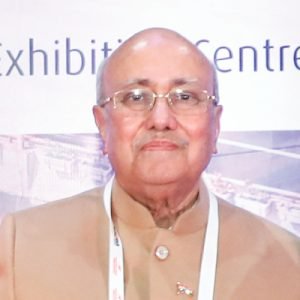 Concluding the session, Kiran K Kapila, President Emeritus, International Road Federation & CMD of Intercontinental Consultants & Technocrats Pvt. Ltd. emphasized on how road accidents continue to be almost the same number as they have been in the last 10 years. He explained, “I was part of the ‘Decade of Action for Road Safety Plan 2010’ when 100 transport ministers of the world met in Moscow. We passed a resolution that we will collectively work to reduce road accidents and fatalities in this world by 50% by 2020. We could not reduce road accidents except that an awareness came that it is a major issue.
Concluding the session, Kiran K Kapila, President Emeritus, International Road Federation & CMD of Intercontinental Consultants & Technocrats Pvt. Ltd. emphasized on how road accidents continue to be almost the same number as they have been in the last 10 years. He explained, “I was part of the ‘Decade of Action for Road Safety Plan 2010’ when 100 transport ministers of the world met in Moscow. We passed a resolution that we will collectively work to reduce road accidents and fatalities in this world by 50% by 2020. We could not reduce road accidents except that an awareness came that it is a major issue.
From the engineering side, we started working on the removal of black spots & grey spots, started trauma trainings, medical awareness to help the injured during the golden hour. But all these need to be done together, you cannot bring in road safety unless you work on the 5Es together.”
 TrafficInfraTech Magazine Linking People Places & Progress
TrafficInfraTech Magazine Linking People Places & Progress

